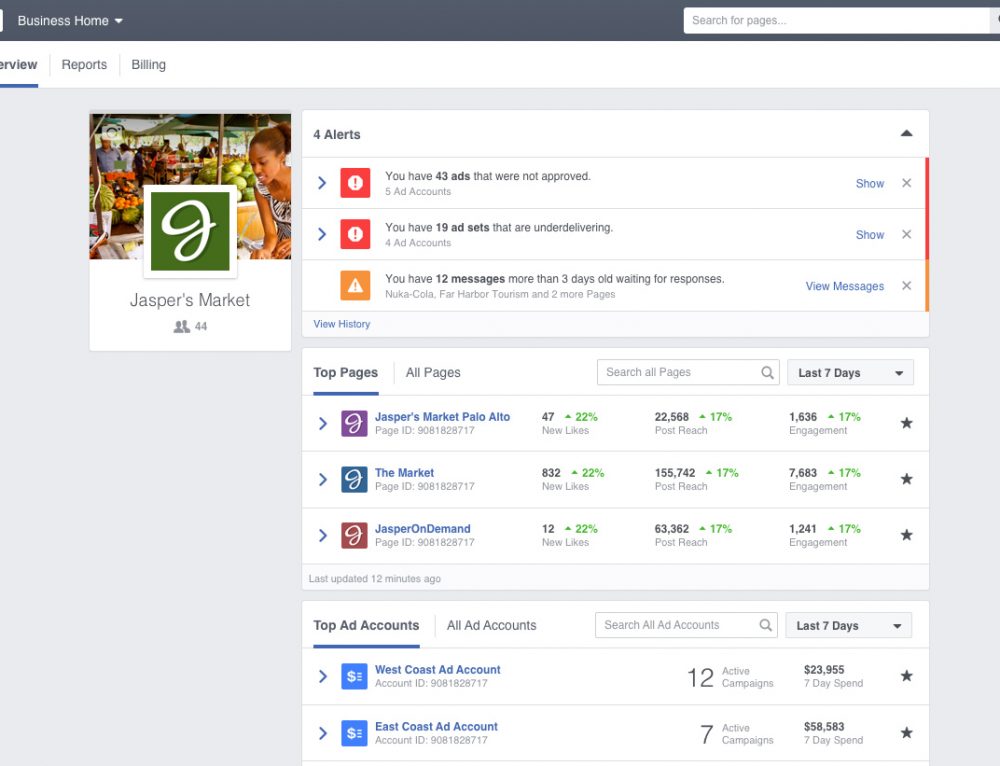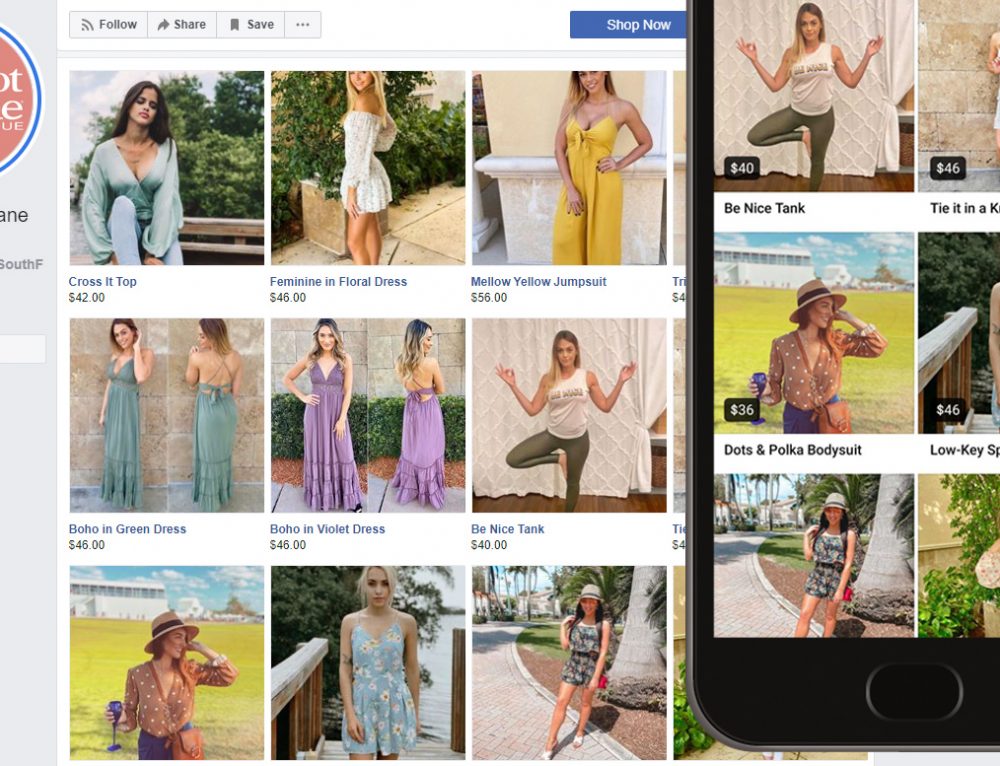
If you want to make sure your multi-location brand gets seen on social media in 2019 and beyond, you’re going to have to pay to play. That means success in social media ad campaigns is more important than ever.
So, how can you tell whether your campaign is working or not? Clear objectives and key performance indicators (KPIs) are essential, says Appsumer’s Simon Whittick. But that’s not all. You’ll also need to establish baseline numbers for every KPI so you can measure and predict growth.
While the objectives of every business will be different, these seven KPIs will almost always be the best way to measure your social media ads’ success. Businesses may also want to think about their advertising away from social media and begin producing some attention-grabbing signage using services from the likes of Northwest Signs so that they can expand their influence in physical locations.
Ad Reach
First things first. Your brand needs attention to fuel your marketing. You can’t start to think about conversions and revenue before making sure enough people see your ad, writes Sprout Social’s Rebekah Carter. That means identifying and quantifying your ad’s reach.
“Reach is an umbrella term in the metric world that informs you of exactly how far your message has travelled, how many people might have seen it and who those people are.”
Carter provides several ways to measure reach, including follower count. You can boost your following using the Best smm panel provider you can afford – this will give you the growth you need to reach new audiences. But the key to social media ads are impressions: “Impressions are a complicated metric to measure. They show how many times your posts showed up on a timeline or newsfeed.
“One user can have multiple impressions. For instance, they may see a post once in their own feed, and then again when someone else they follow shares it. Though this number is vague as it simply indicates how many people could connect with your brand, a higher number is typically better.”
Some people will tell you to ignore reach, but don’t listen to them, Vendasta’s Maddi Sutor writes. Reach becomes more significant when measured alongside the other metrics listed below.
Engagement
Marketo’s Tristan Esposo believes engagement should be one of the main focus areas for social media marketers.
“It shows early signs of growth and progress that you can assess and eventually add to your planning,” Esposo writes. “For example, if your Twitter handle has a broad reach with low engagement, that’s usually a negative, because it shows your content hasn’t resonated well with your audience. Reaching millions of people means nothing if they aren’t interested in what you offer.”
Jenn Deering Davis, head of communications at TrendKite, notes that comments, retweets and other forms of participation are sensible ways to measure your ad’s engagement.
It’s important to take note of these figures because they demonstrate the extent to which your audience is interacting with your brand, writes Adweek’s Pius Boachie. But don’t be consumed by them. If your gym’s Facebook ads are getting tons of comments, but no one is coming in to sign up for a membership, then the ads aren’t actually performing well.

Ad Frequency
Keep track of the number of times each person sees your ad.
“This is an important metric to pay attention to to make sure you’re not oversaturating your audience with your ads,” says Facebook ad expert Claire Pelletreau. Pelletreau aims to keep the frequency of News Feed ads under four and the frequency of sidebar ads under eight.
If too many people see your ads, they could become banner blind and disregard the ad entirely, writes the team at Instapage.
Switching up ad designs or running different offers is a great way to keep showing ads to the same users without worrying about them ignoring you or becoming annoyed.
Ad Cost
“The cost of your campaigns is the most crucial part of your overall social media strategy,” writes the team at Data Pine. But working out how much to pay isn’t easy.
Facebook offers two ways to pay for an ad: CPM and CPC. CPM stands for “cost per mille” and is the price for 1,000 views of your ad, regardless of whether anyone clicks on it. CPC stands for “cost per click” and is typically decided by you at the start of a campaign. If you need more advertisement during this time, you can always look on pay-per-click agencies like Linear to help with getting the word out more, potentially bringing in more people.
CPC is the most common method in online advertising, the team at Campaign Monitor notes. It can be tempting to set your CPC at the start of a campaign and forget about it. Don’t. Keeping track of your ad’s CPC as well as its performance will help you to work out how much an ad is going to cost to run long-term and what kind of financial return you’re likely to see from it.

Click-Through Rate (CTR)
Your click-through rate is the ratio of users who have clicked on your social media ads, as Buffer’s Courtney Seiter describes. It can be found by taking the total number of clicks on your ad and dividing that by the total number of impressions.
Looking at the click-through rate of your ad lets you put reach and engagement into context, Doris Sleep founder Tracey Wallace writes. A higher CTR indicates that more people are interested in your ad.
But bear in mind that just because people don’t click doesn’t mean that they are interested. “Even if someone is interested in your product, they may not click on your ad because they are averse to doing so,” Wallace writes. “Instead, they may view your ad and visit your website at a later time.”
Don’t be surprised if this is a low number, writes Nima Gardideh, founder of the growth agency Pearmill. “If a link ad has a link CTR less than 0.75%, you should consider swapping it out with a new ad unit. You should de-prioritize changing the Creative or Ad Unit if the CTR is above 0.8% and close to 1% or higher.”
Conversion Rate
Clicking on your ad is a start, but what really counts is what happens next. The action you want users to take after clicking on your social media ad – whether that’s signing up for a free spin class, downloading a coupon for your pet store or requesting a home valuation – is a conversion.
The number of conversions divided by the total number of ad clicks gives you your conversion rate. The higher, the better.
Before even thinking about your conversion rates, it is crucial you define exactly what a conversion is within your campaign, says CLEANCODED’s James Bregenzer. “This will give you the insight needed to confidently increase investment in what’s really working (and drop what’s not), and it makes the process of communicating successes to others much easier.”
The team at DashThis emphasize how important this is to track. “The whole point of being active on social media for a business is, of course, to create brand awareness and social media engagement by reaching your consumers and qualified leads directly. At the end of the day though, what you want is for all your marketing efforts to pay off by converting your followers into revenue drivers.” This might not be an easy task as marketers would have to manage many business accounts every day. Nonetheless, experienced marketers would already know this, and might use browsers like clonbrowser, which allows multiple logins and many other tools, to ease the work.
Return On Ad Spend (ROAS)
Return on ad spend is a way to work out how much revenue you’ll generate for every dollar you spend on advertising, consultant Anna Crowe writes. “Essentially, it gives marketers an idea if they spend X on this advertising campaign then you’ll receive X back in increased revenue.”
Crowe recommends businesses calculate ROAS with the following formula:
(Revenue generated by the ad – Cost of the ad) / Cost of the ad
Imagine you spend $1,000 on a Facebook ad for your restaurant chain, and that ad drives in revenue $2,000 from customers who clicked on it. Your return on ad spend would be (2000-1000)/1000, or 100 percent.
There are few better metrics for working out whether your campaign is successful, particularly if its aim is to increase revenue. In fact, strategist Rebecca Bowden goes so far as to call ROAS “the most telling metric to understand if you have a successful Facebook Ads campaign.”
Just because ROAS can demonstrate whether your ads are profitable doesn’t mean it’s the only KPI you should track. Every KPI listed above can help you increase the effectiveness of your social media ads and ensure you’re getting your money’s worth.
Images by: Stephen Dawson, Adeolu Eletu, William Hook





